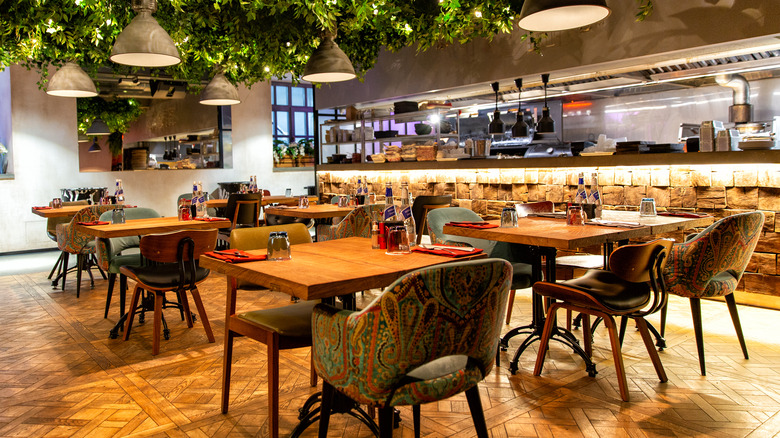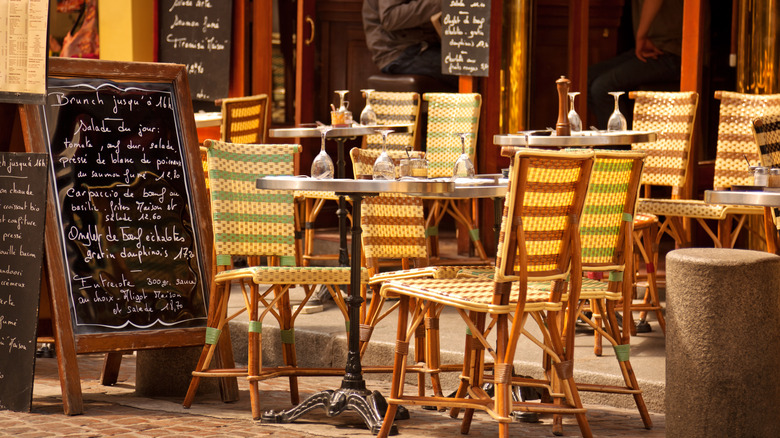A Bistro Restaurant Isn't Your Typical Eatery
Bistros have carved an identity for themselves in the crowded restaurant space. Customers have a certain level of expectation — fancy but not too fancy, simple food served with a little pizazz. Some diners may expect to be served a selection of French cuisine. So with that in mind, what exactly are bistros, and what separates them from other food establishments?
The term "bistro" may have originated from a phrase meaning "hurry" used by Russian soldiers ordering food in occupied France in the 1800s. According to Merriam-Webster, a bistro is "a small or unpretentious restaurant." This is typically true of bistros, which are often located in small buildings and focus on creating a more intimate atmosphere. Typically, the maximum party size for a bistro is between four to six people. The limited occupancy prevents large crowds from overwhelming the establishment. This may be in part due to bistros' French origins in the 19th century. Originally, the term was coined for pop-up restaurants run by landlords and homeowners, often in their basements. These modest kitchens offered food to tenants and served as a means for landlords to supplement their incomes.
Over time, "bistro" has evolved to mean a restaurant with simple elegance and a menu to match. Here's how bistros compare to other restaurant types.
Bistros vs. other eateries
When compared to fine dining, bistros have less stringent requirements and a relaxed dress code, so there are fewer non-sensical rules that you have to remember. However, you shouldn't dismiss bistros as lesser.
While bistros have a focus on simple food, they're not the same as fast-food restaurants. They're more upscale than that. Think business casual vs. casual. In bistros, a hostess seats you, and you order food from your table. Meanwhile, most fast food joints take their orders at a counter or through a drive-thru and focus on speediness rather than a laid-back ambiance.
Cafes may be similar in many respects but wouldn't be mistaken for a bistro. The main difference between the two lies in their menus. Cafes generally serve a variety of pastries, sweets, and coffees, which can be enjoyed on the go. By comparison, bistros serve hearty fare, often inspired by French cuisine, like steak frites, escargot, and crème brûlée. Even those that don't serve French food often focus on dishes that create a personal connection between the chef and dinners and showcase the chef's talents.

